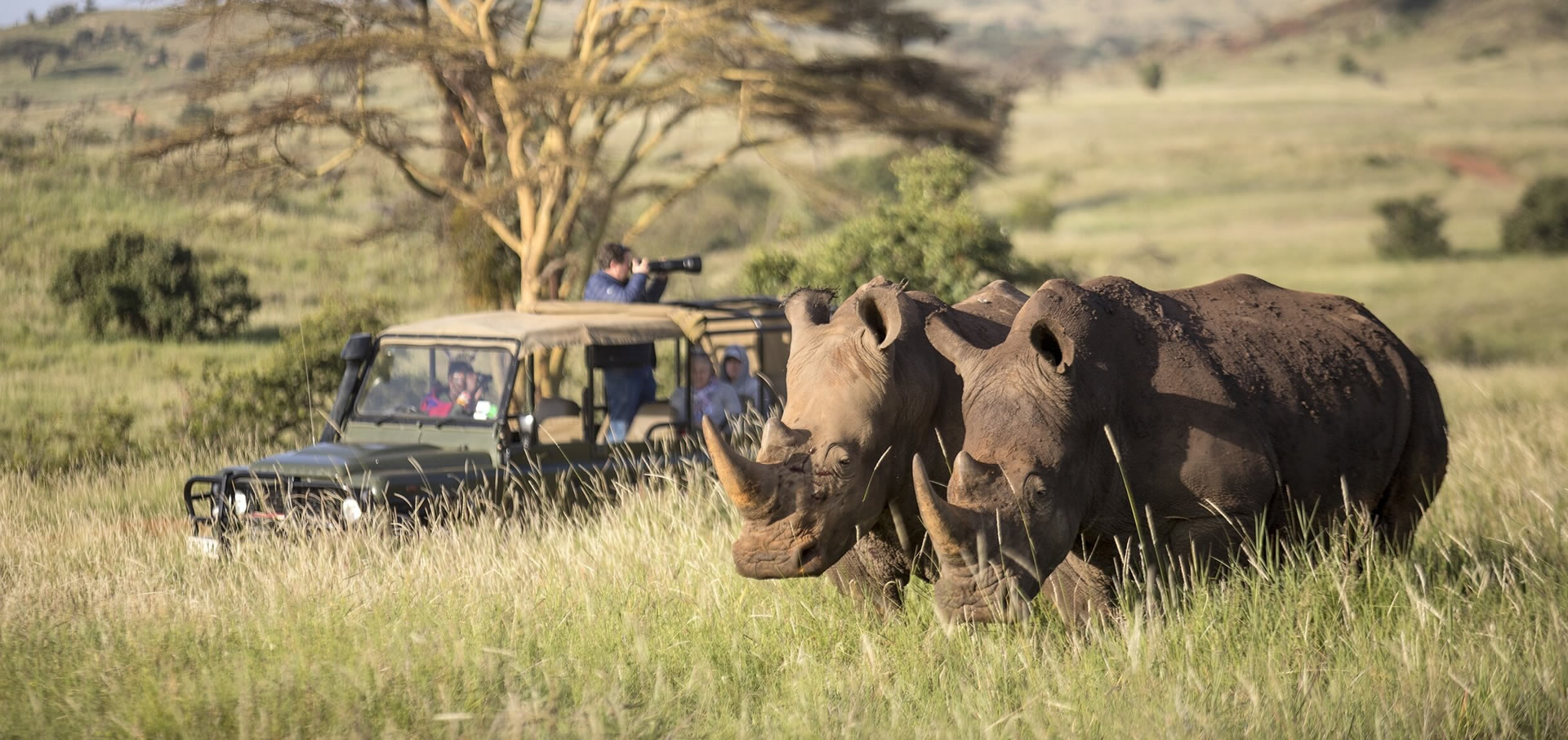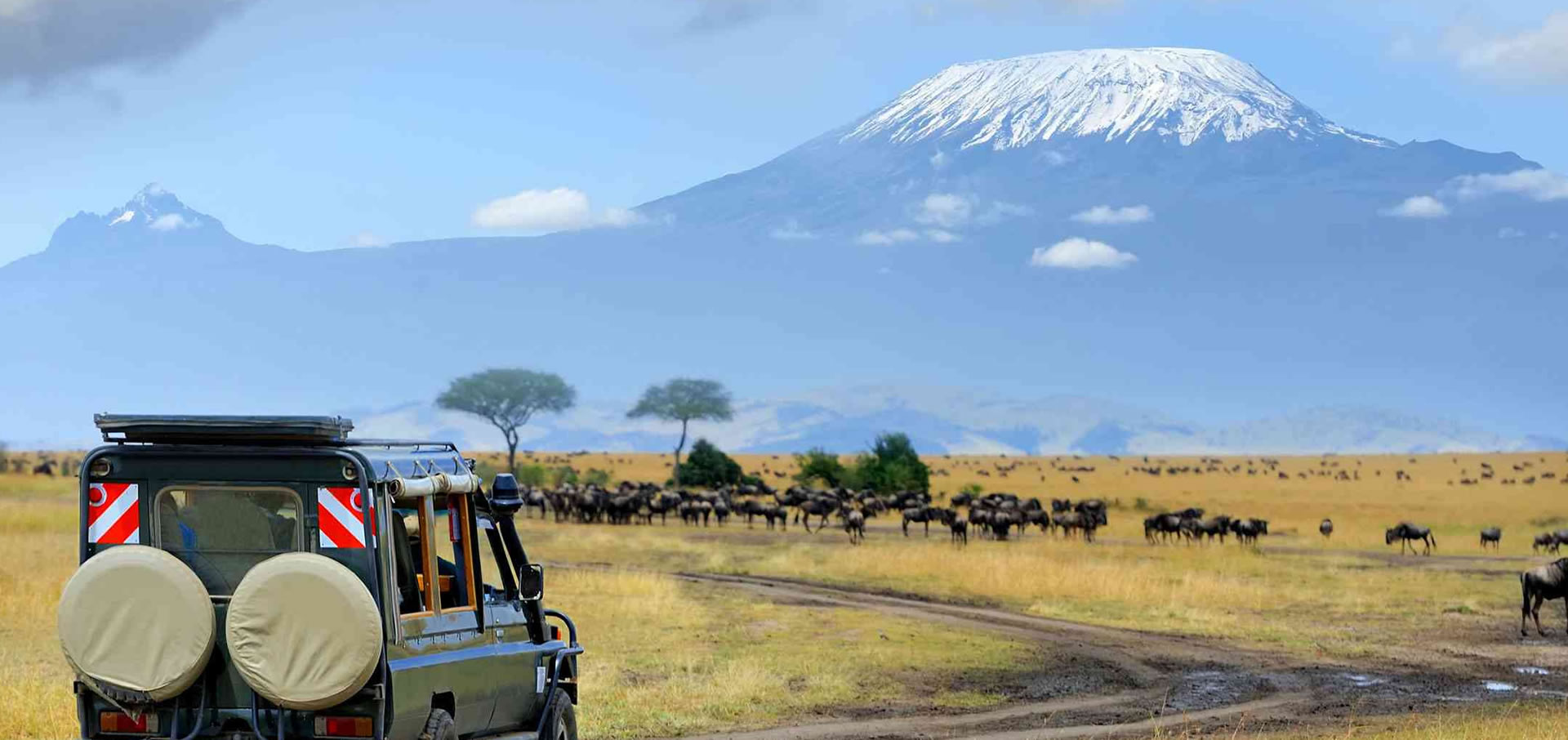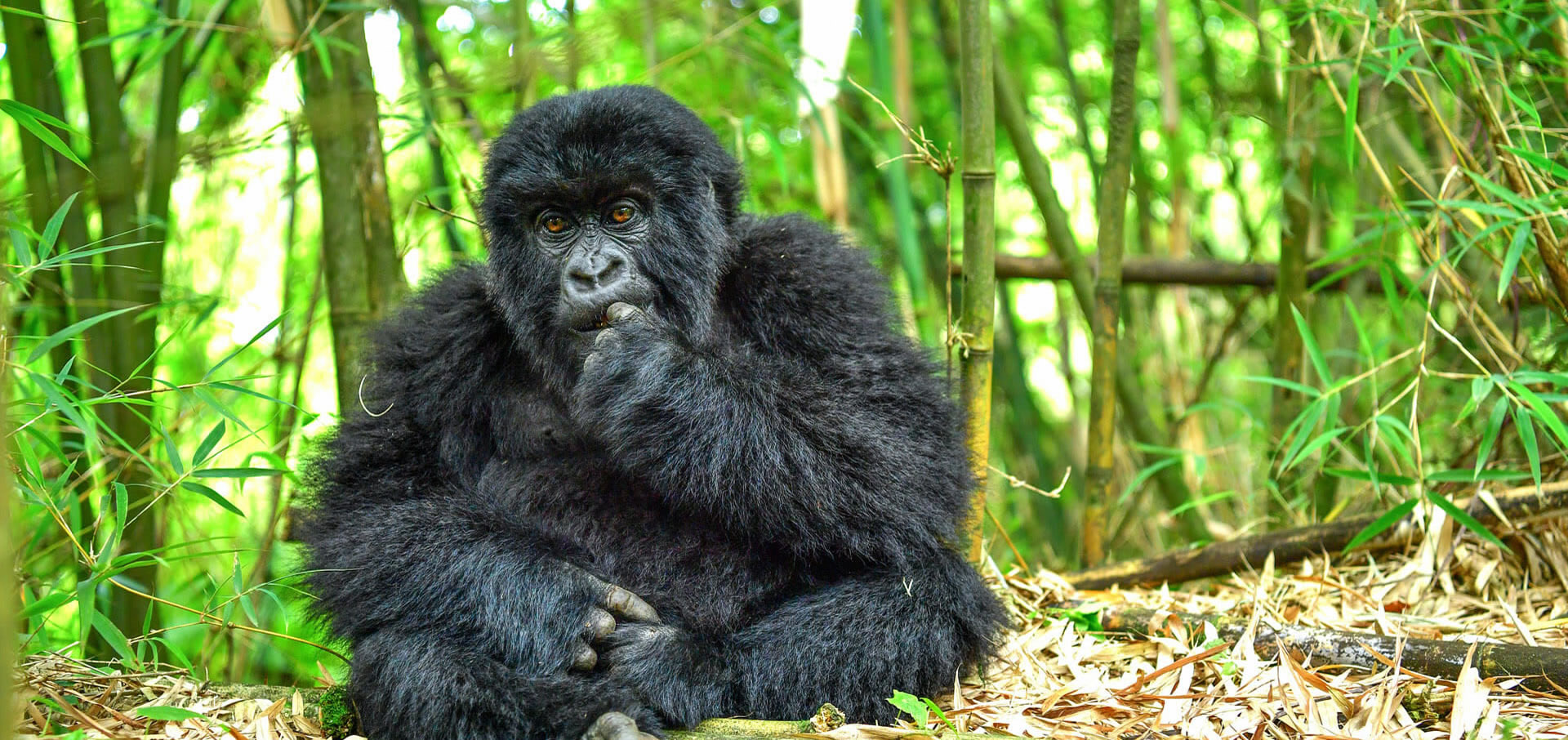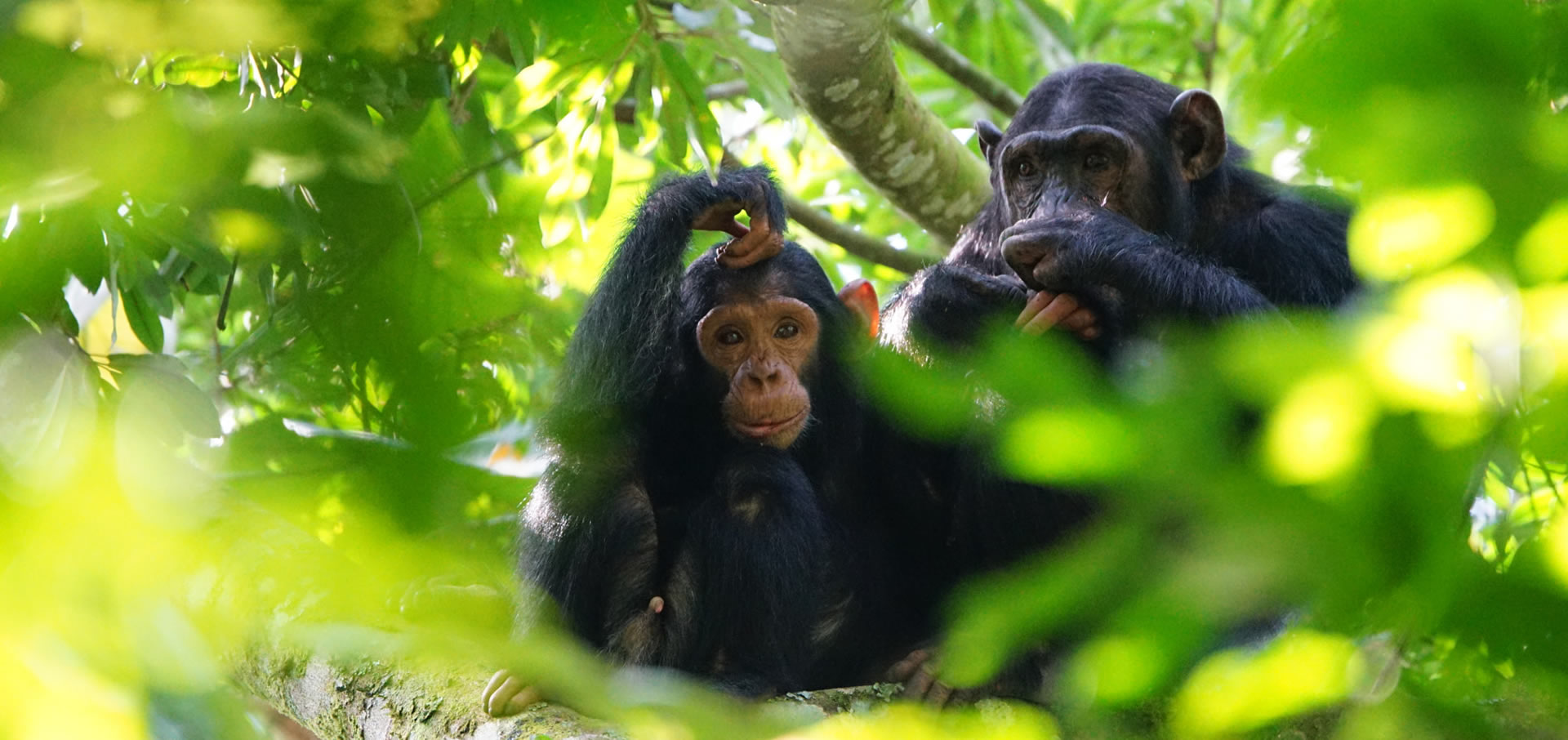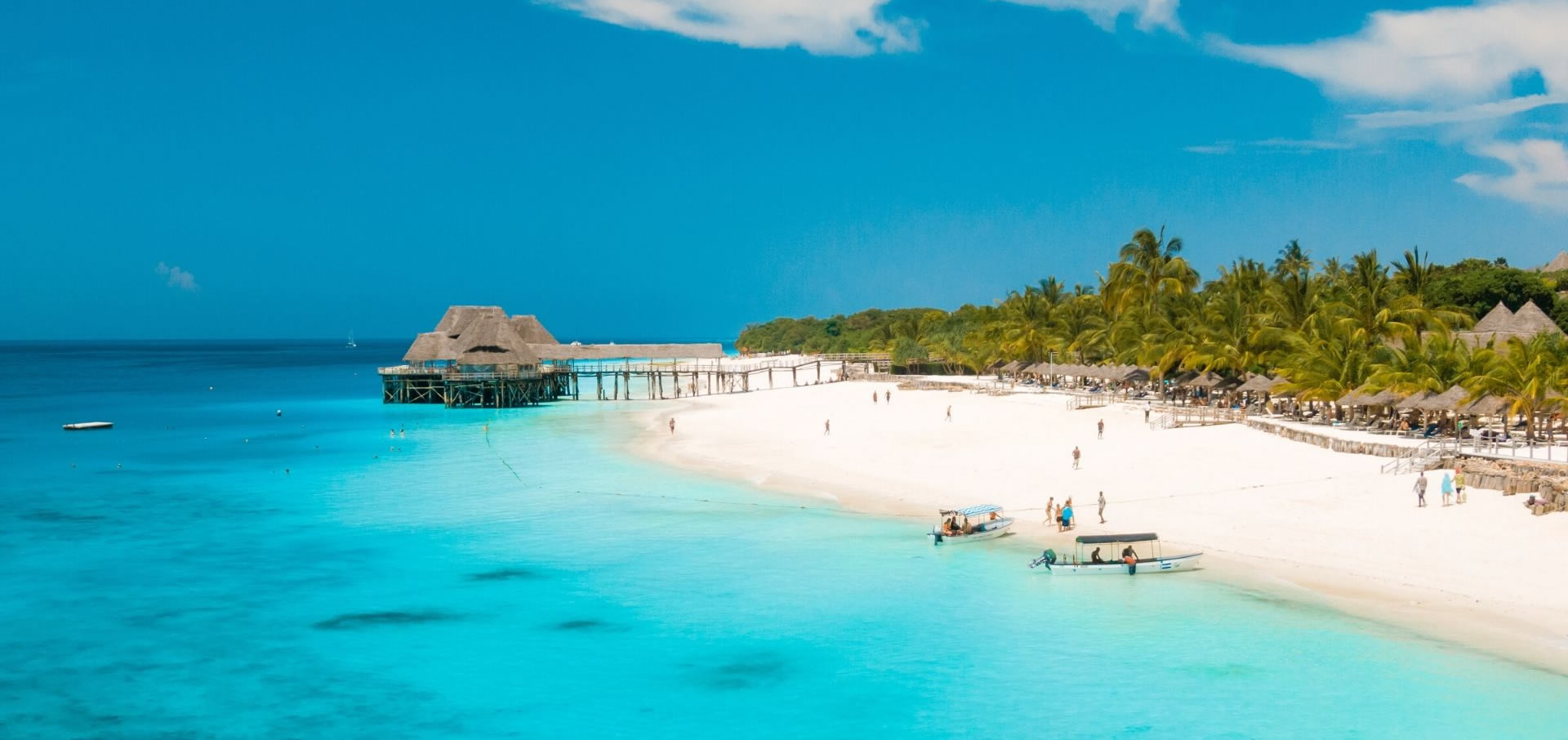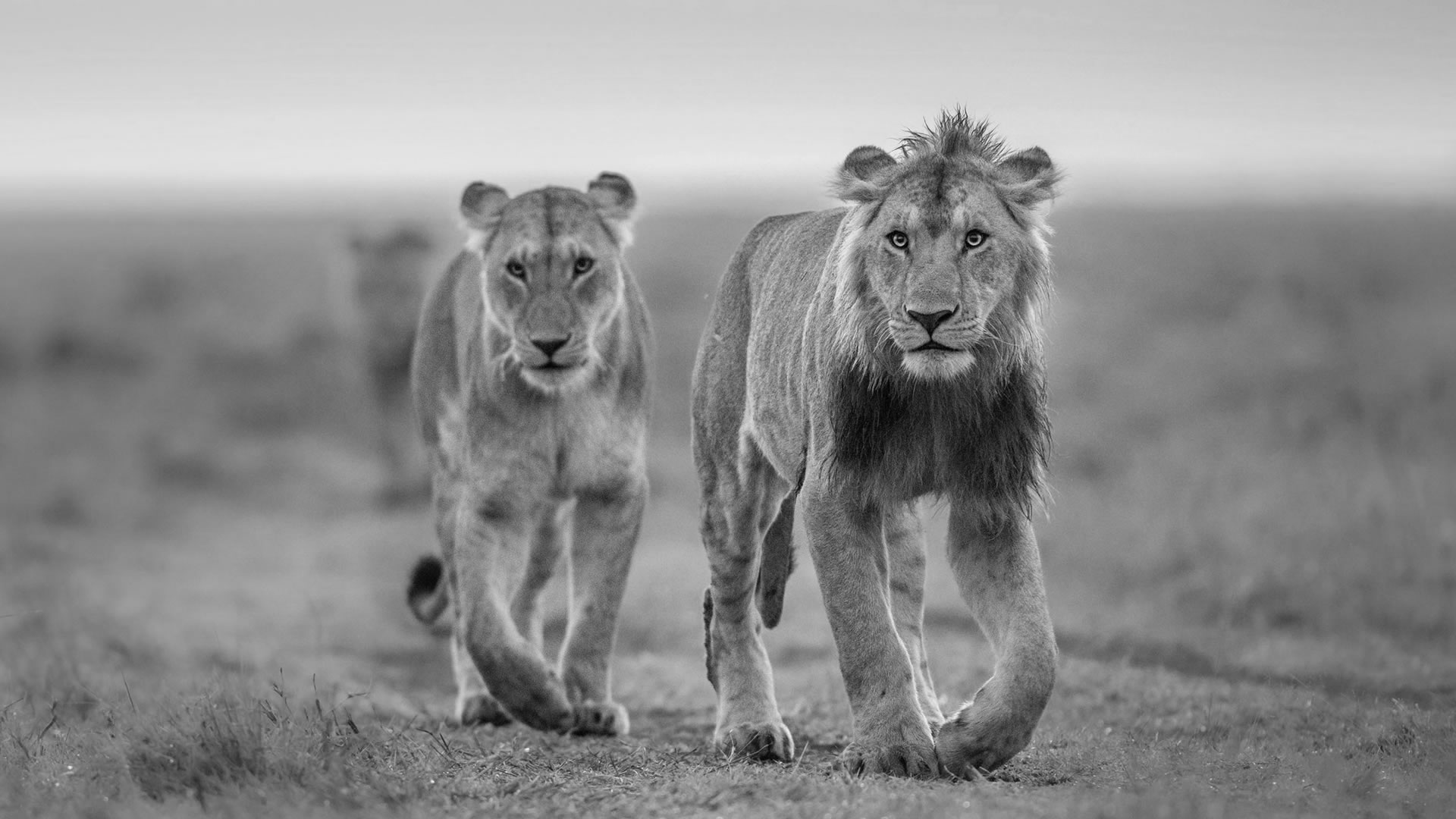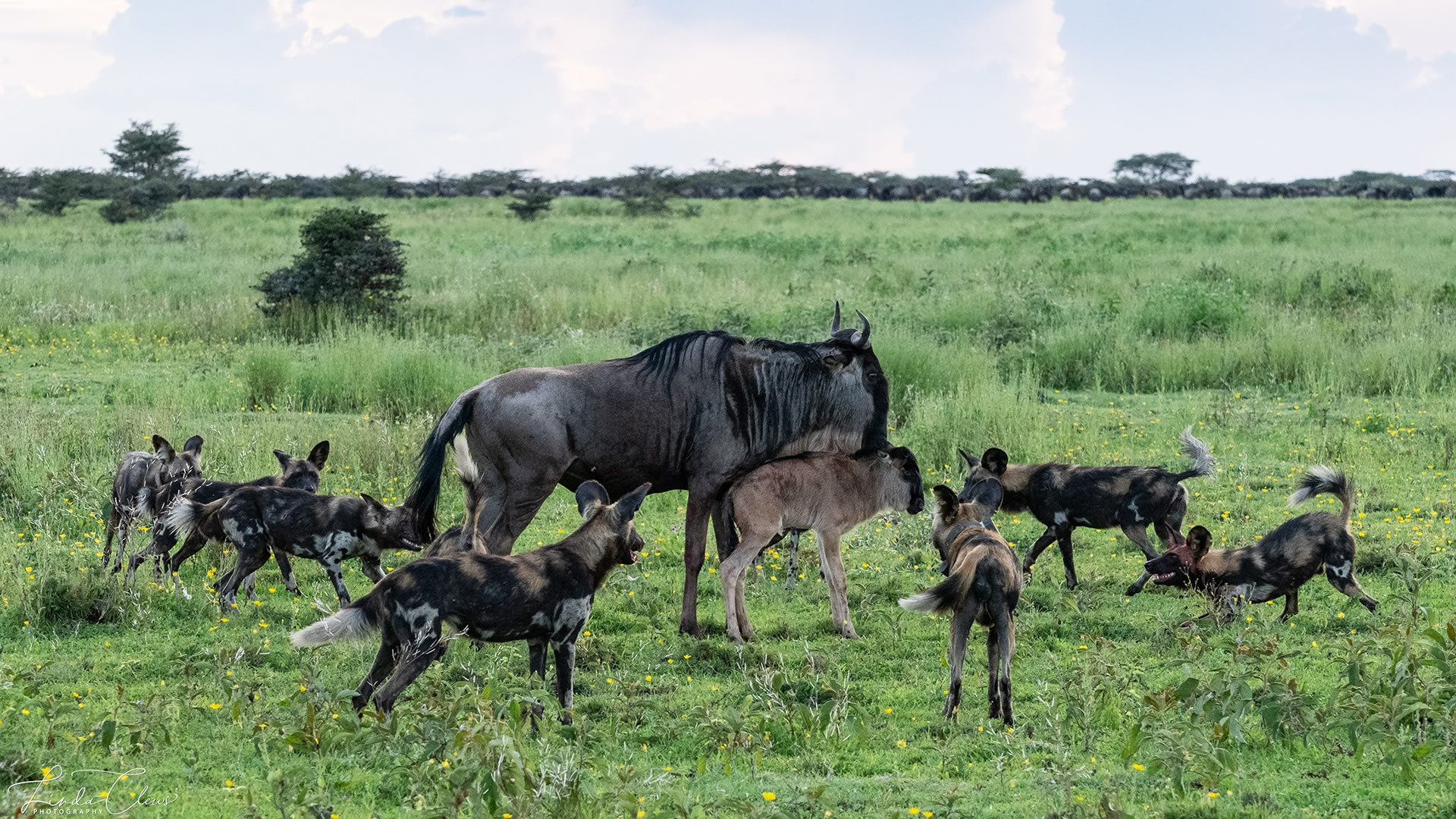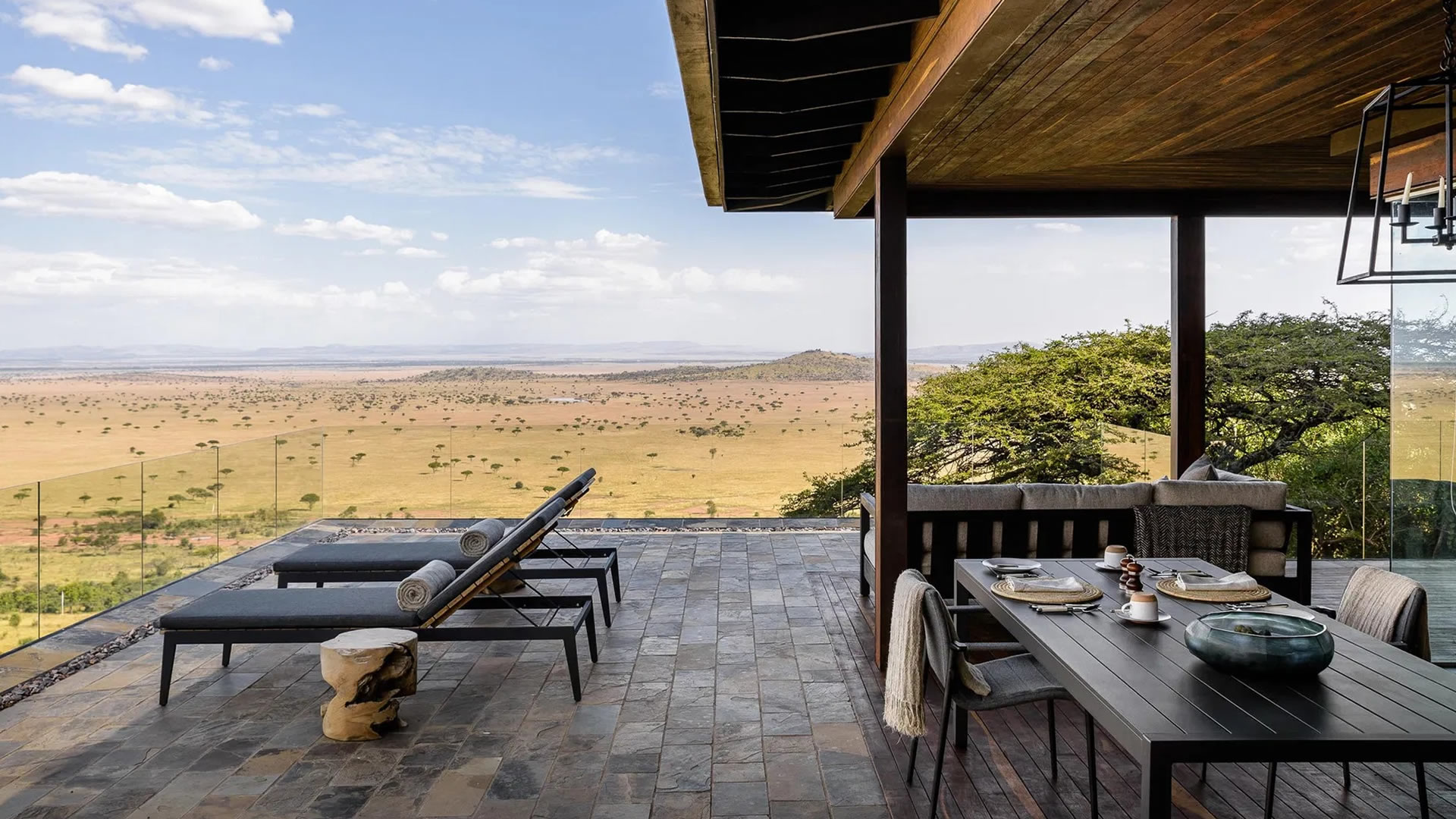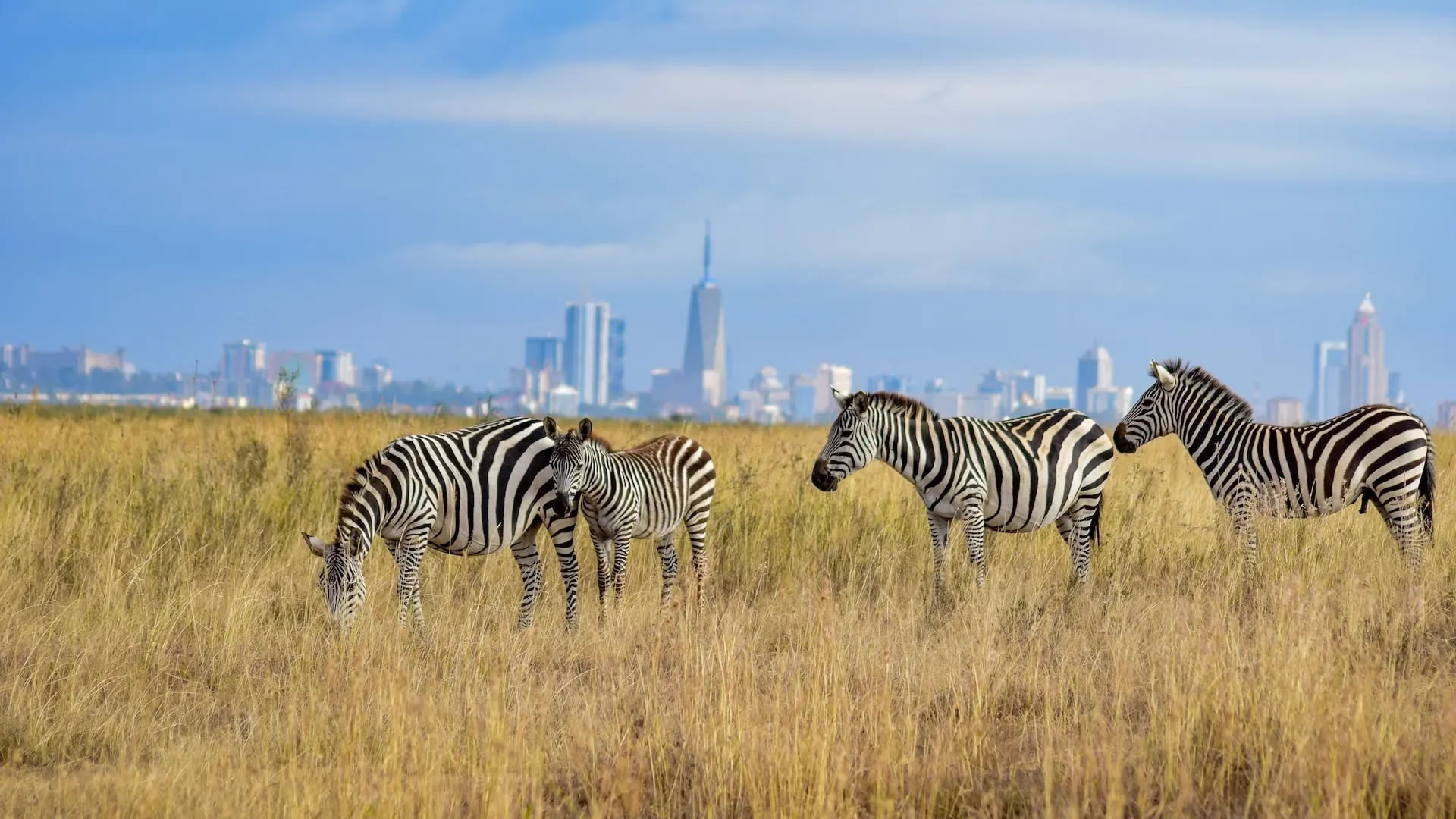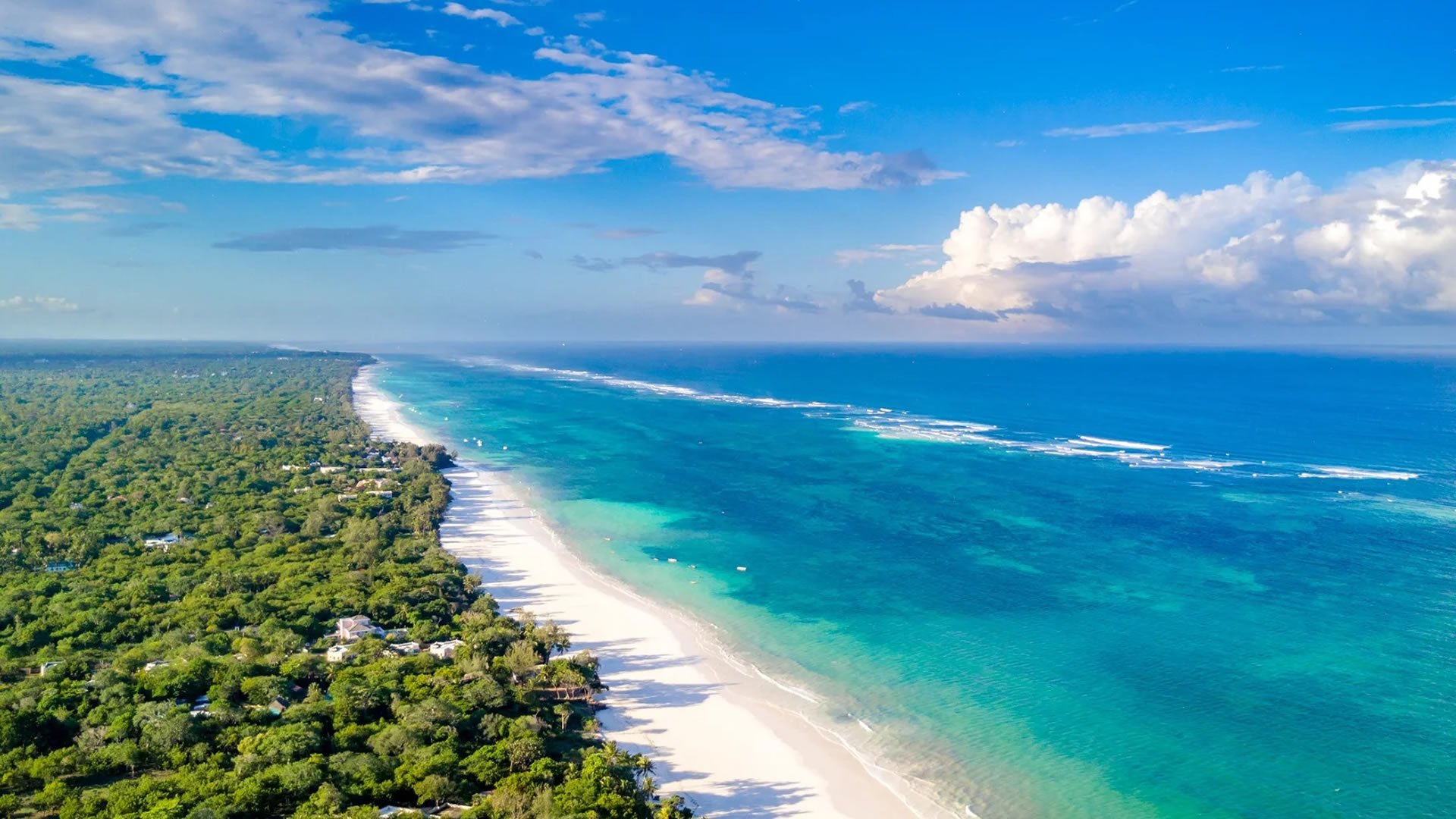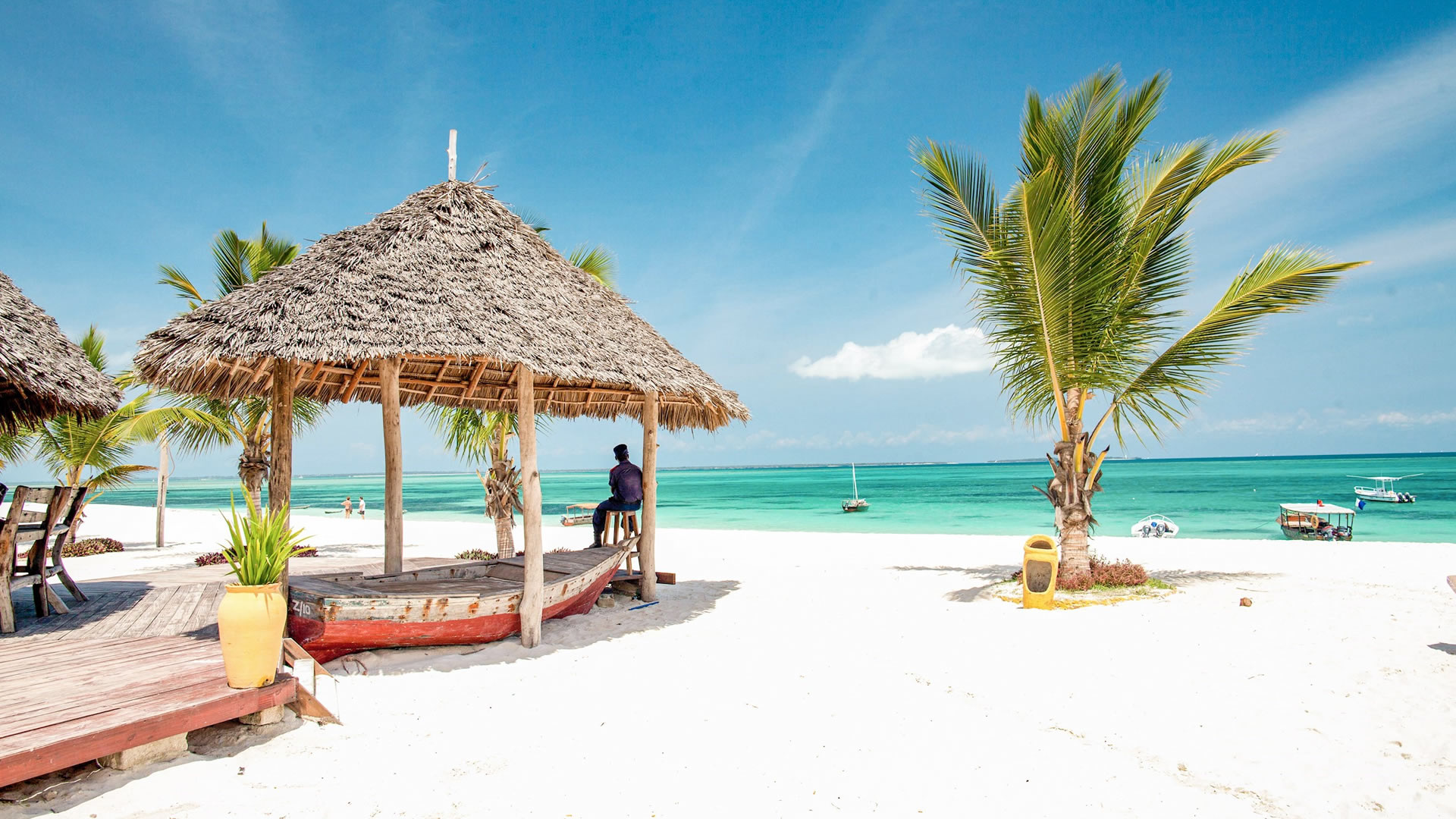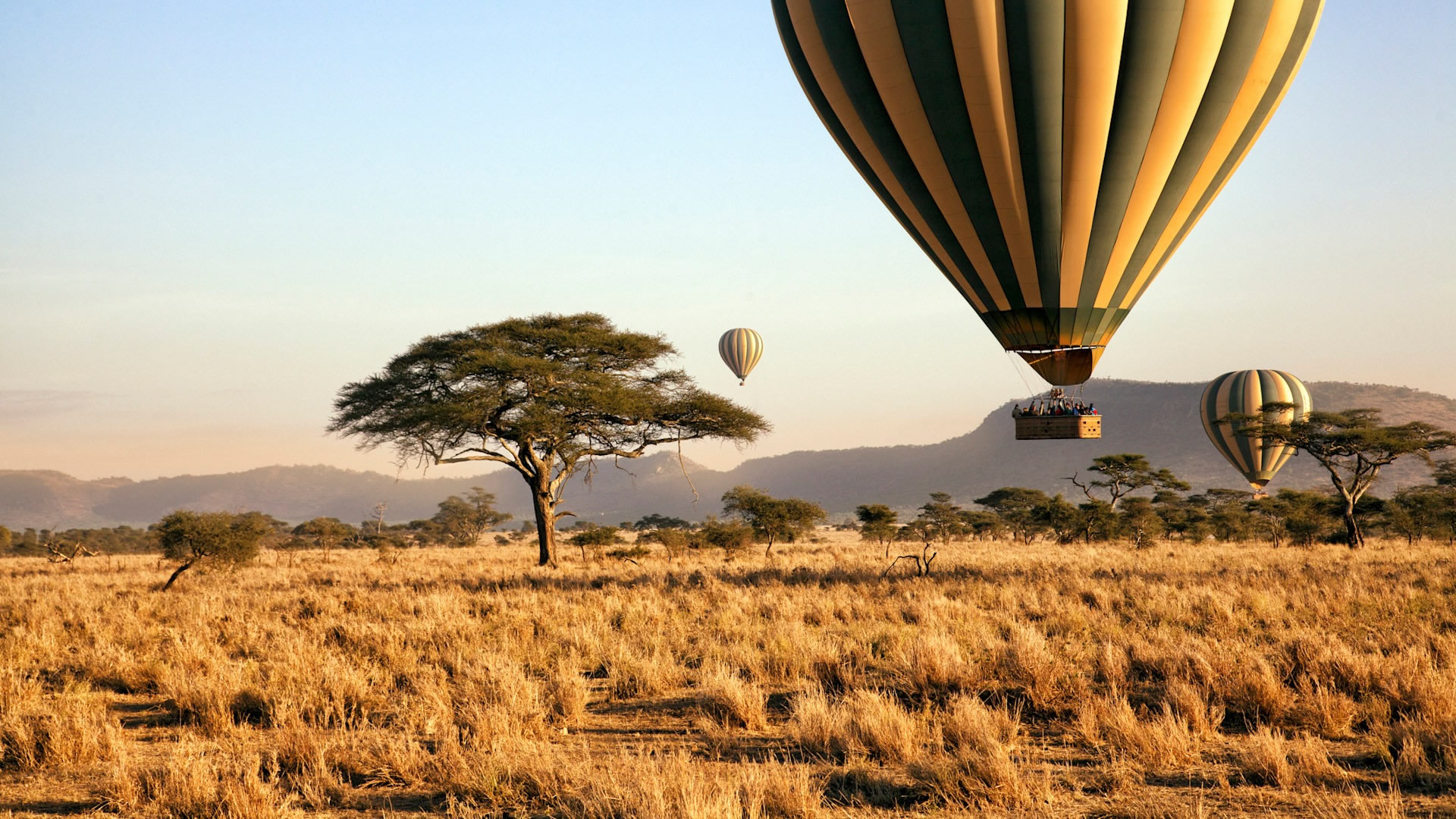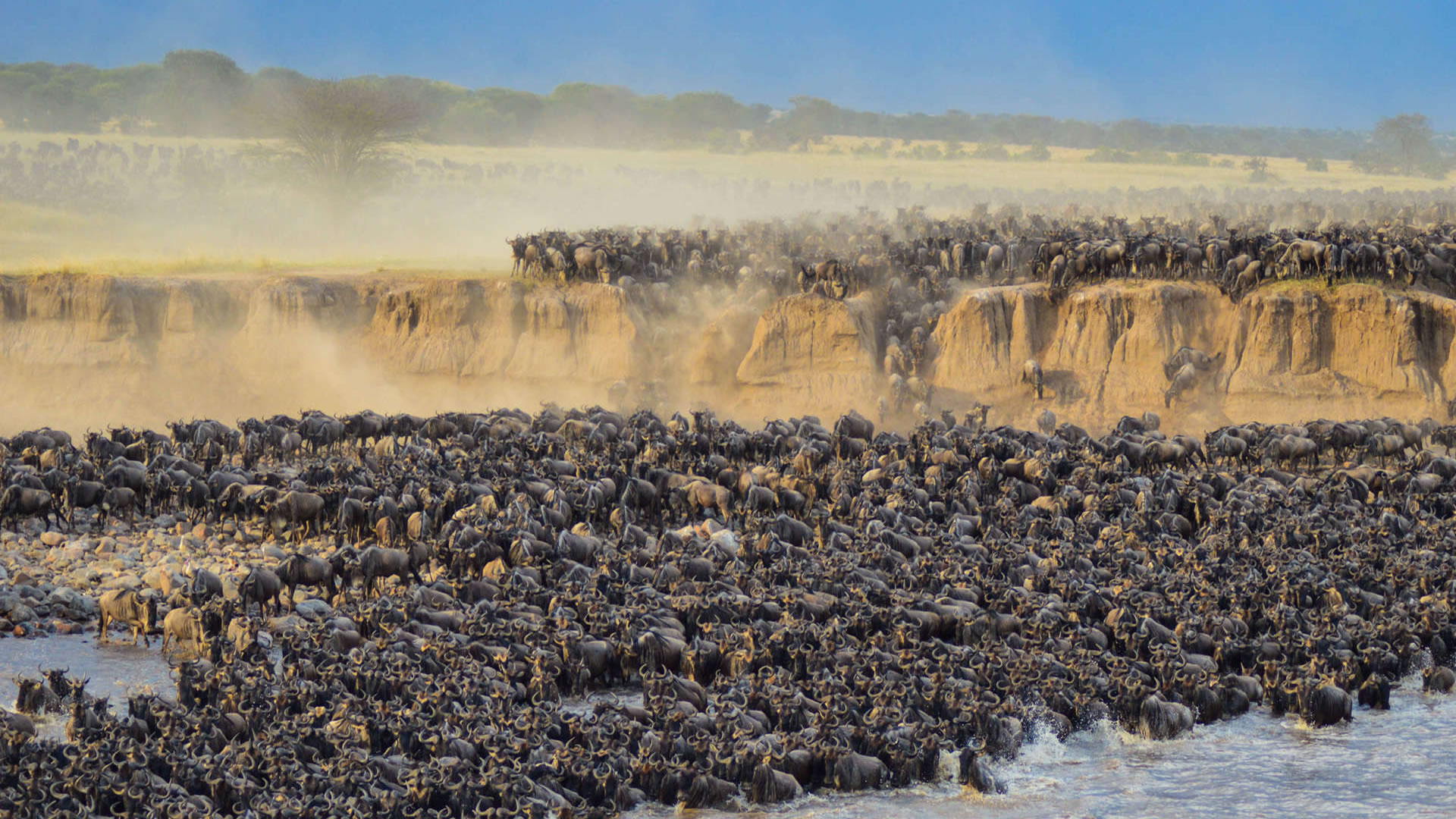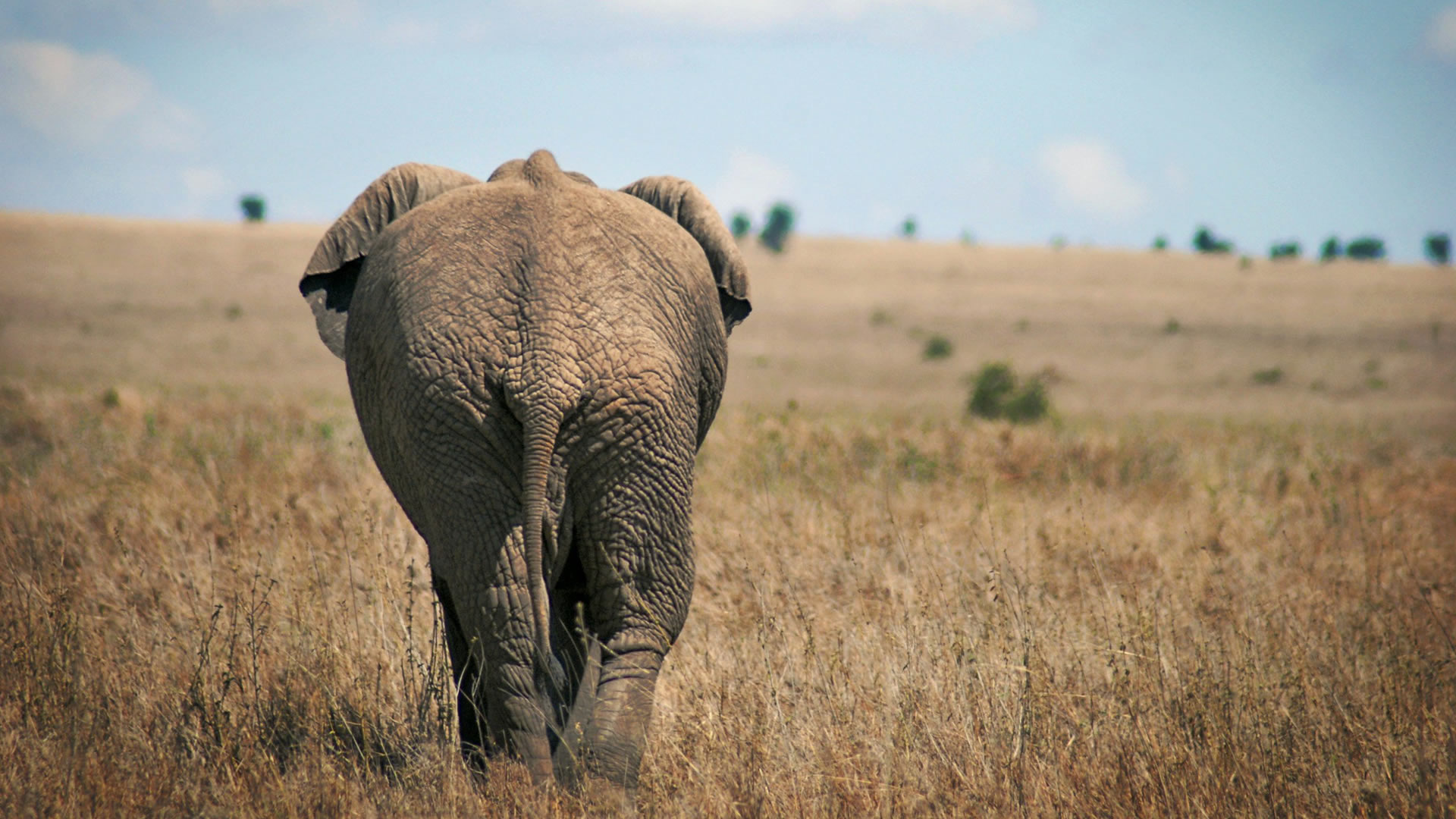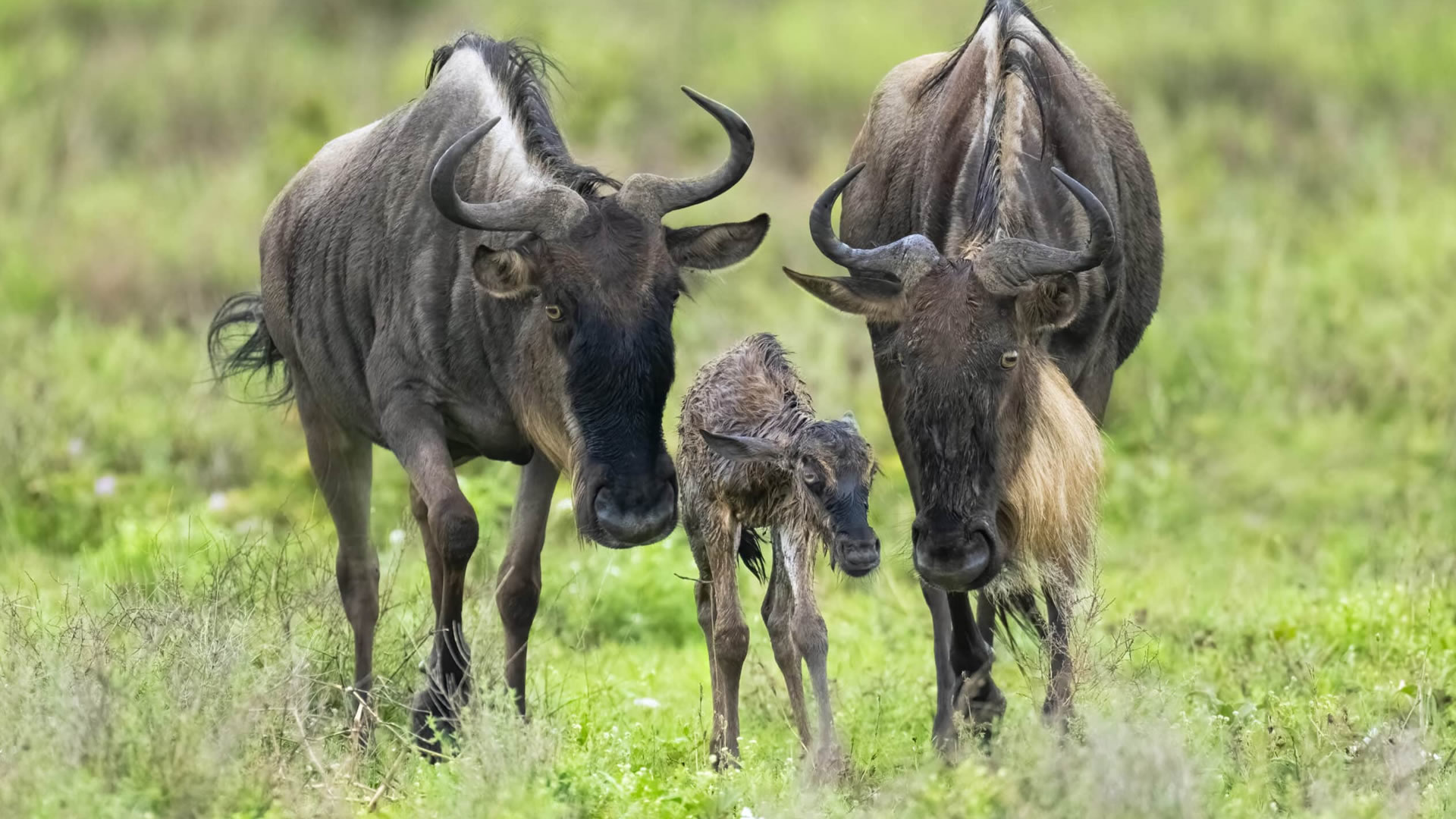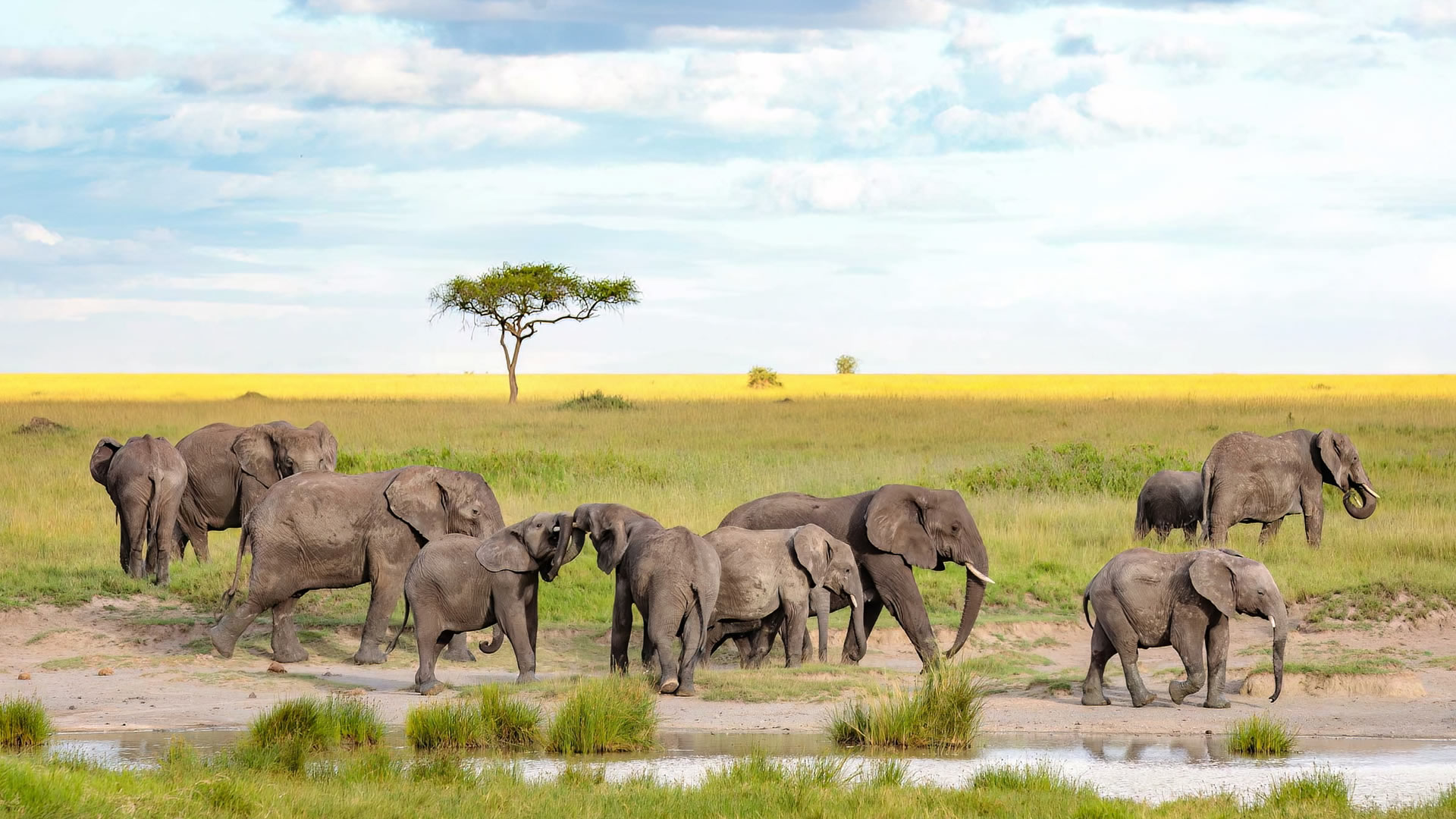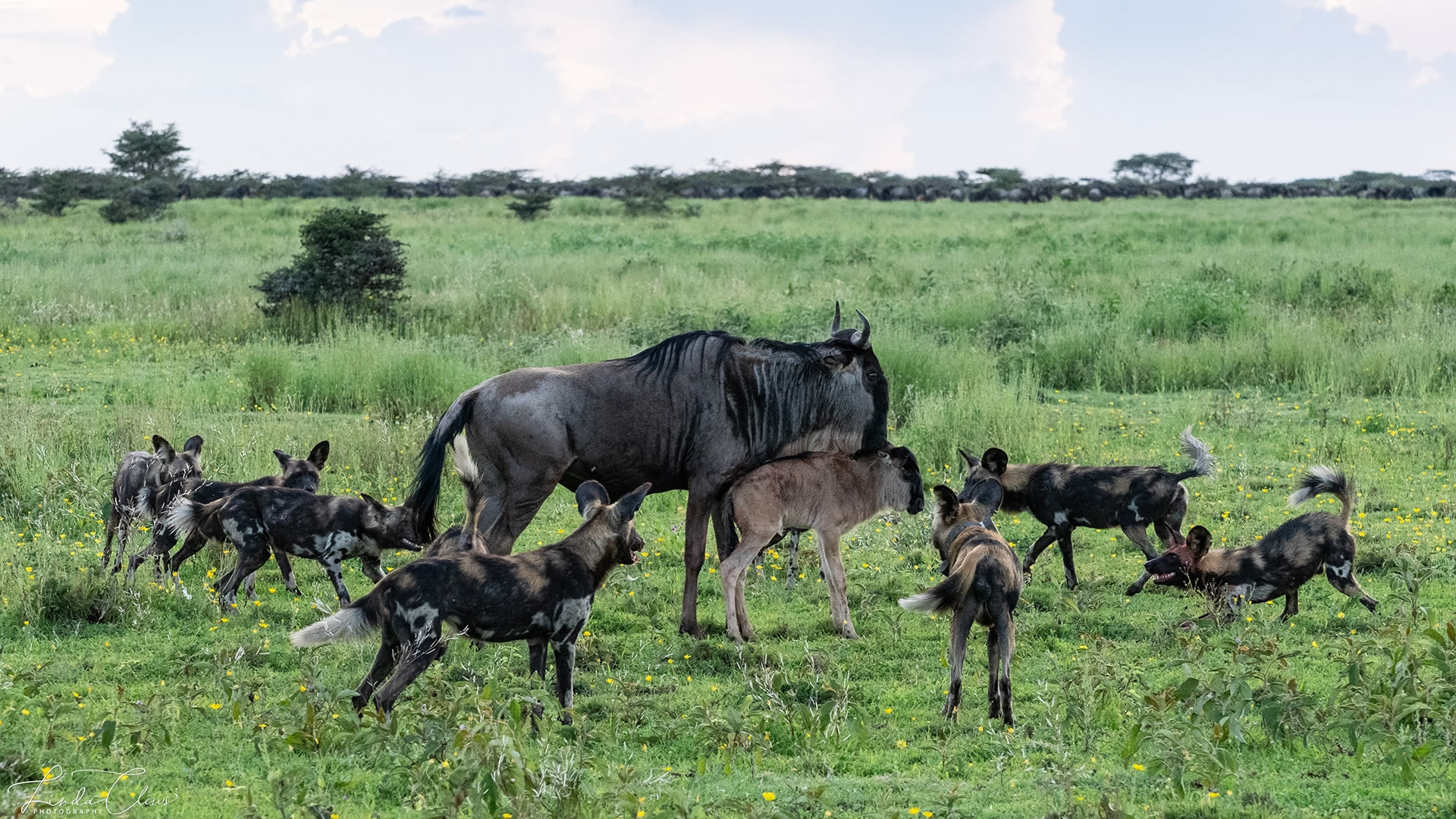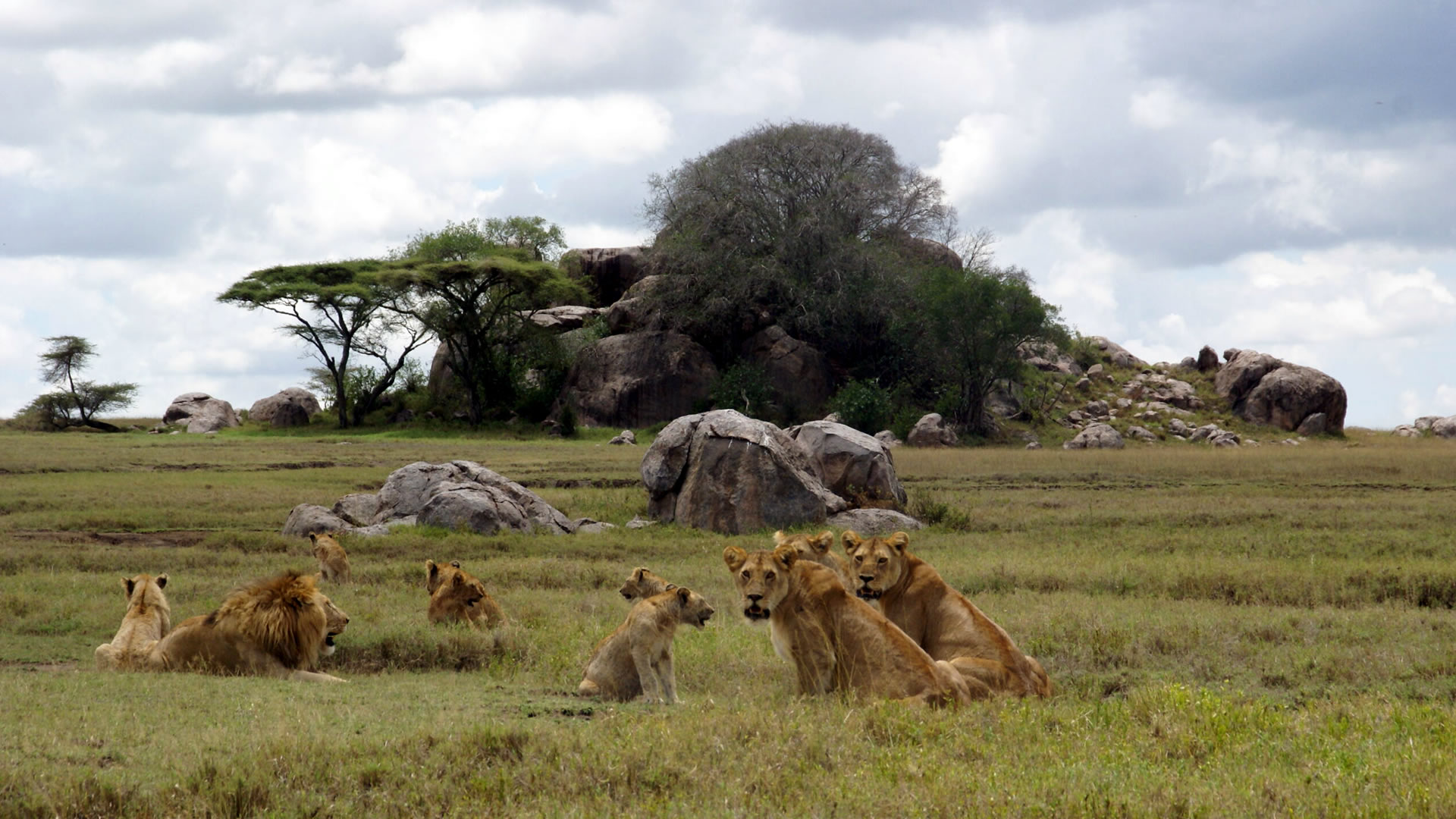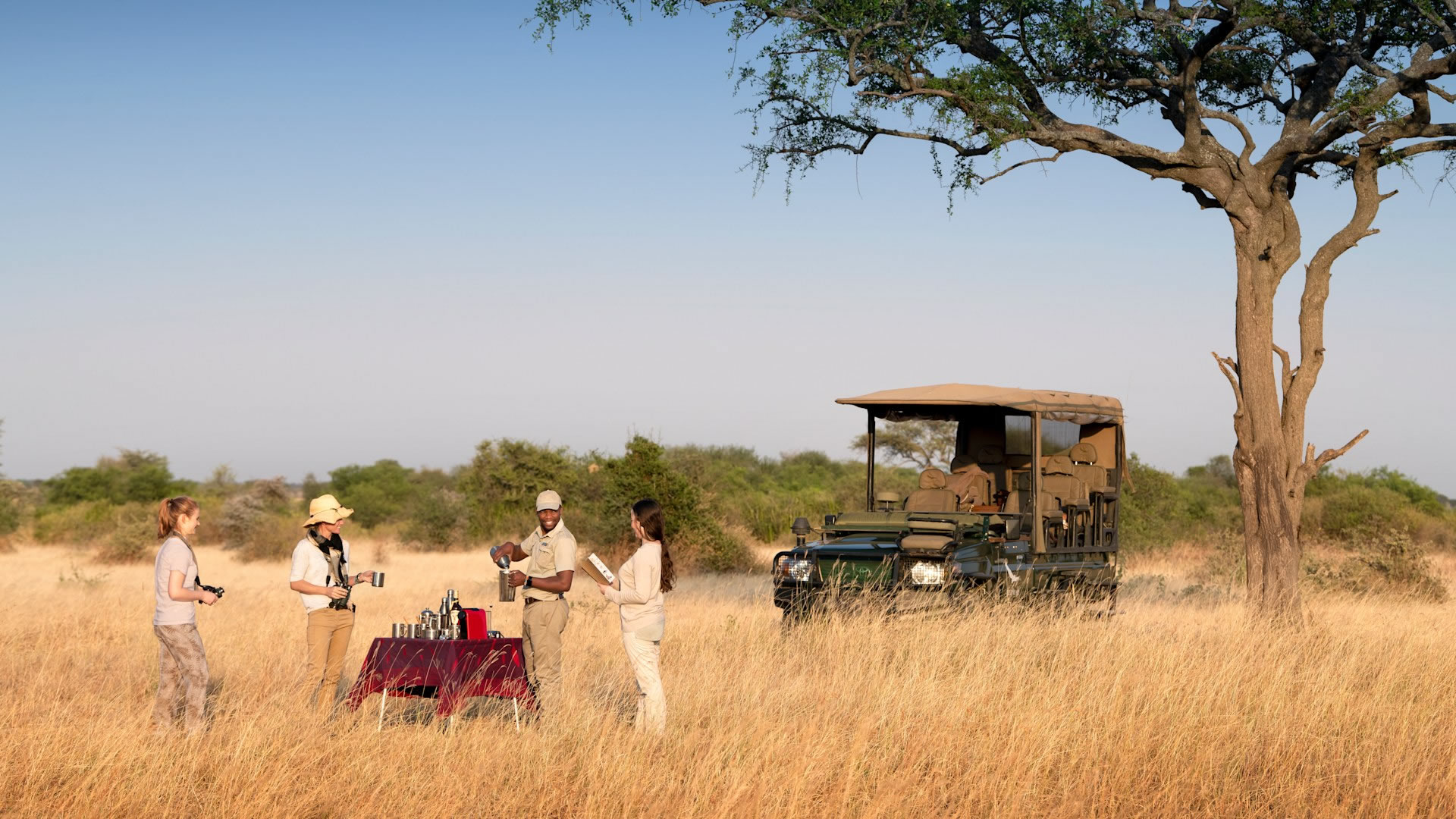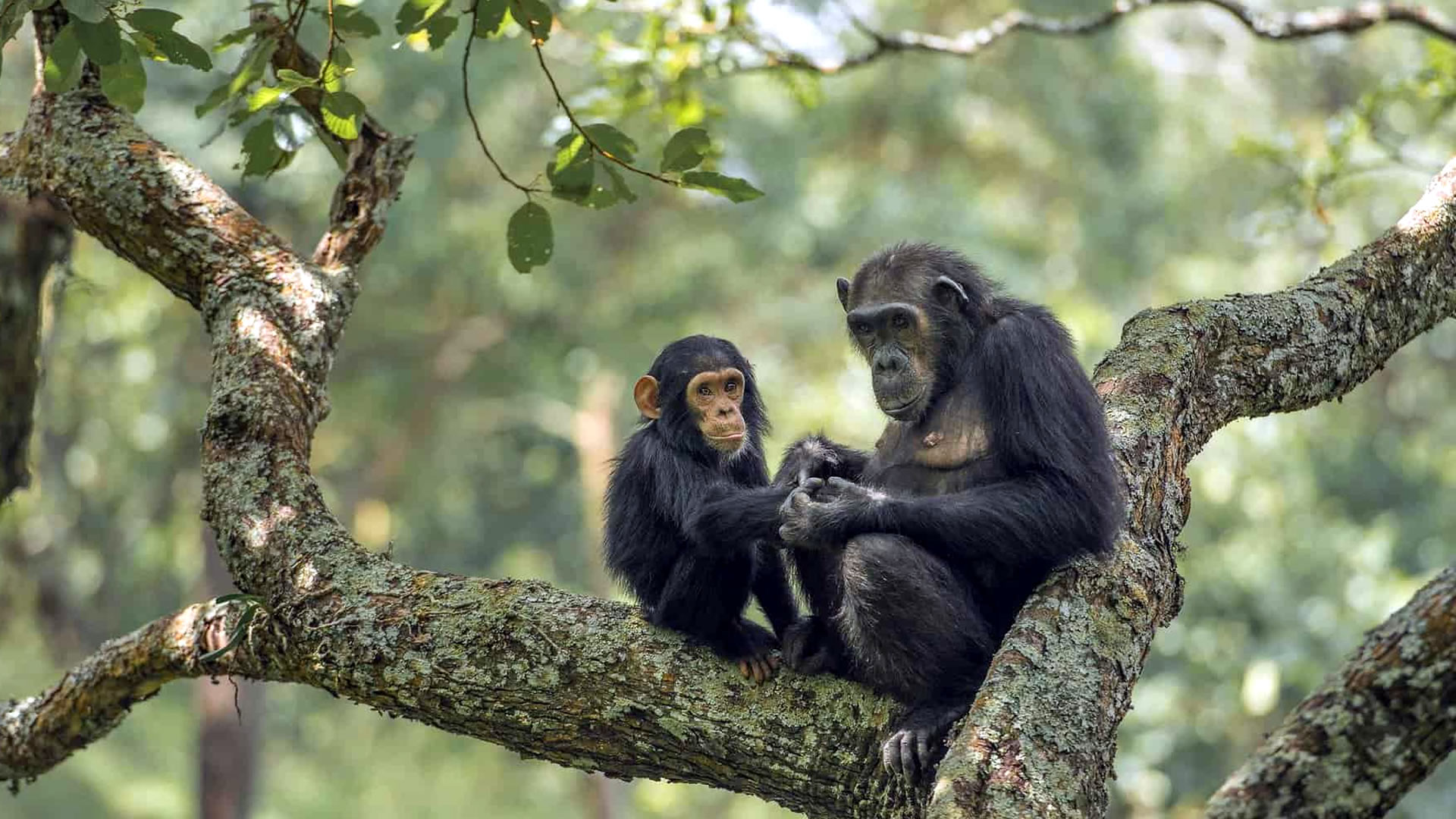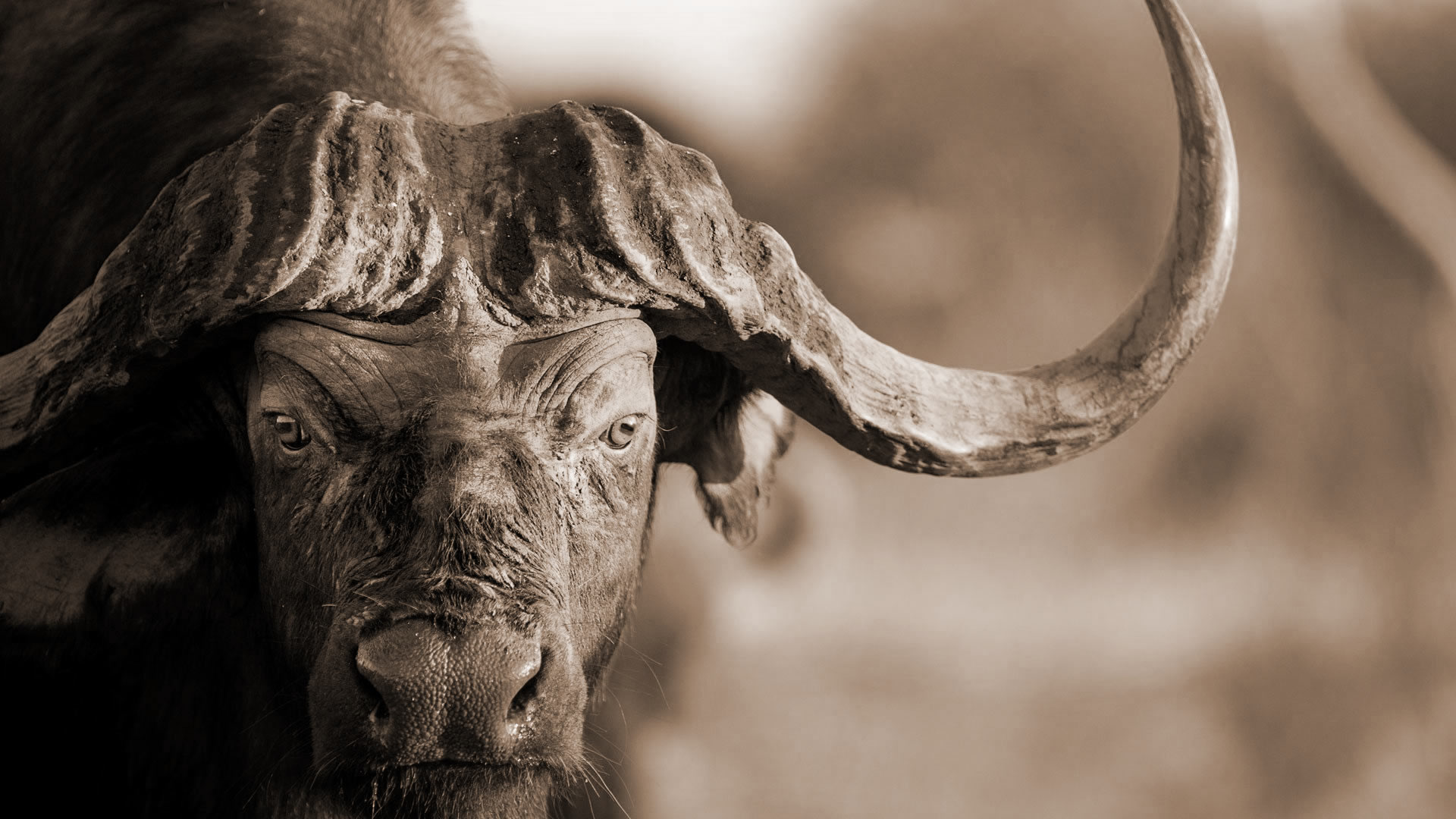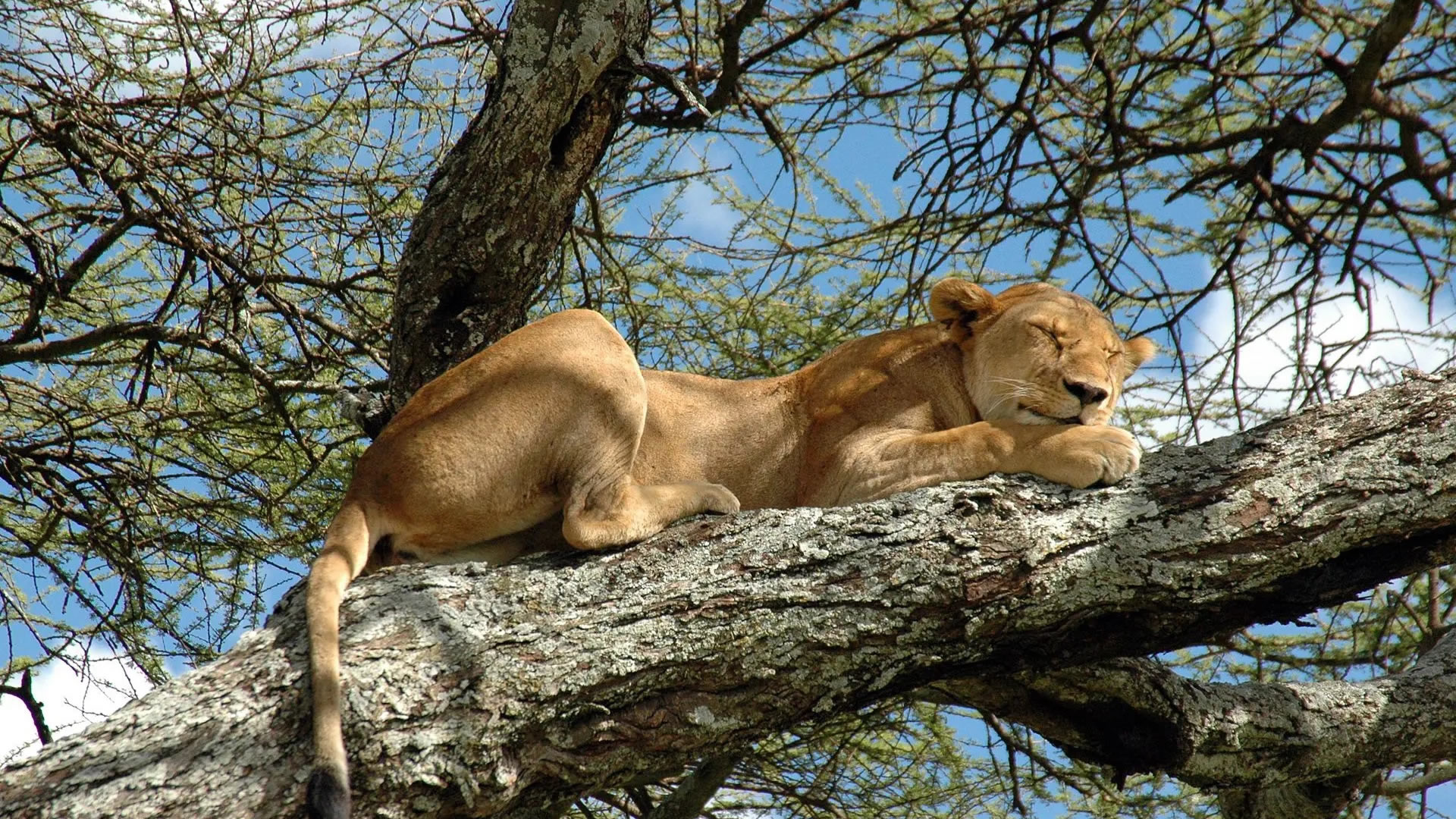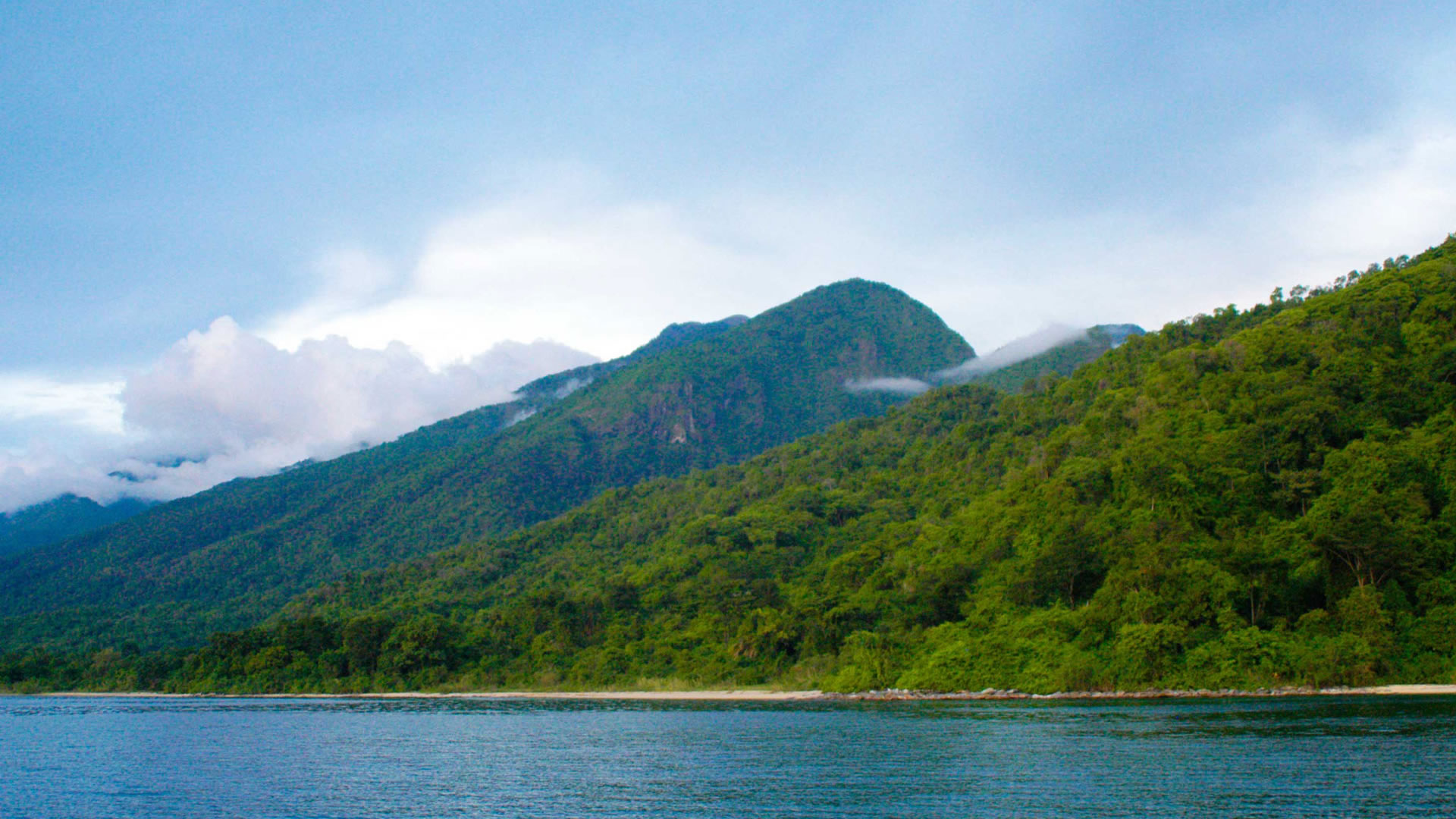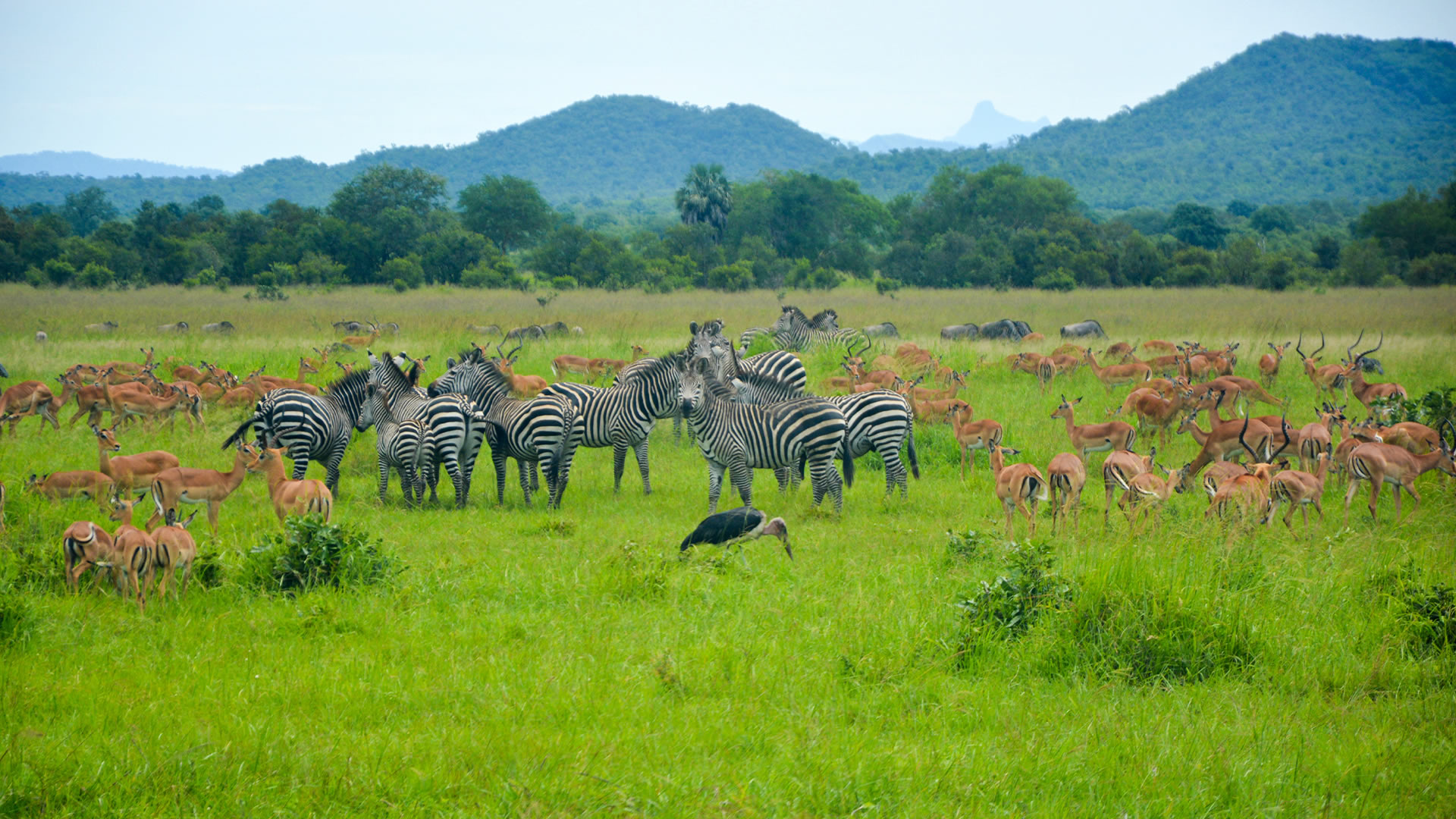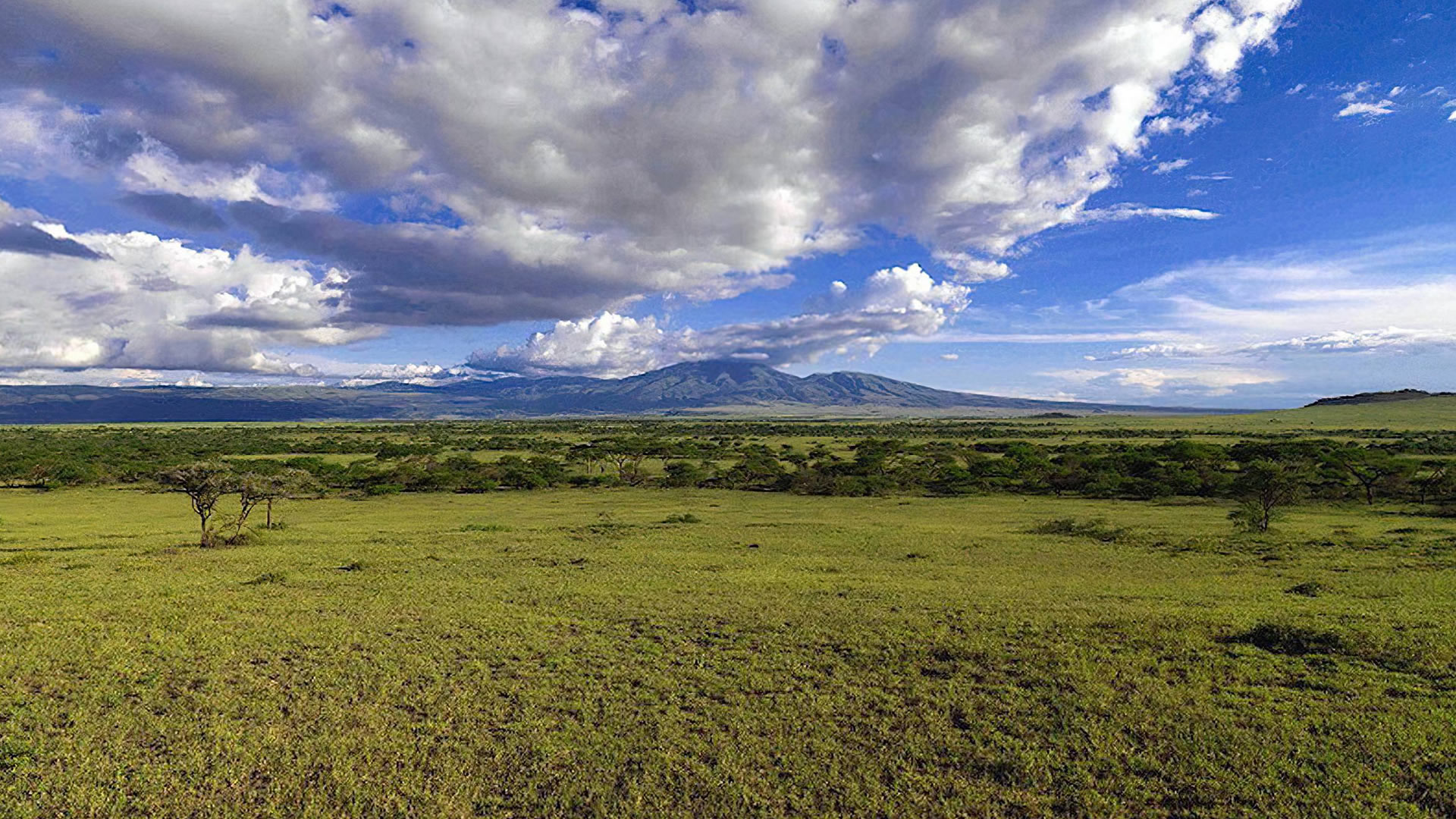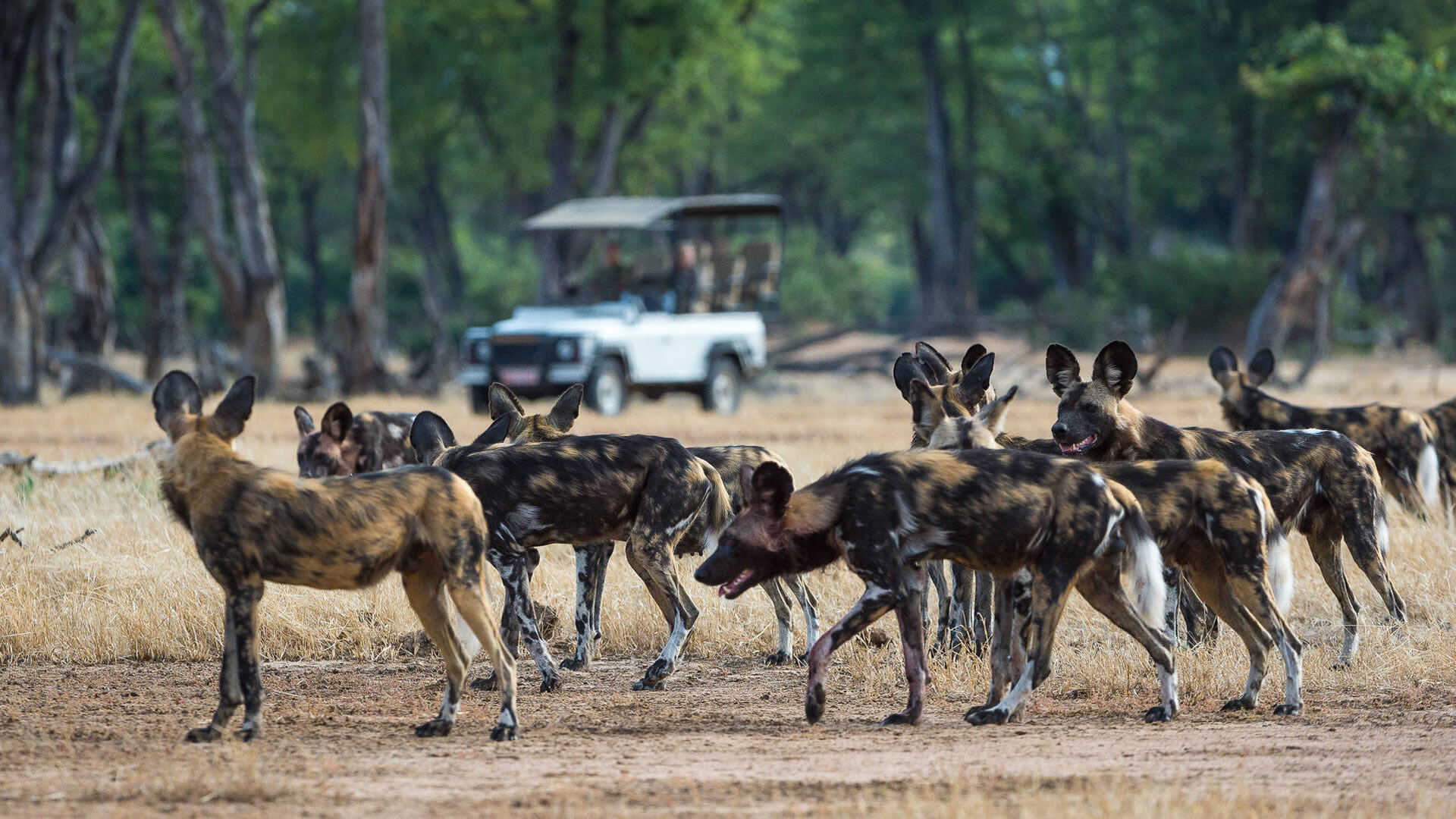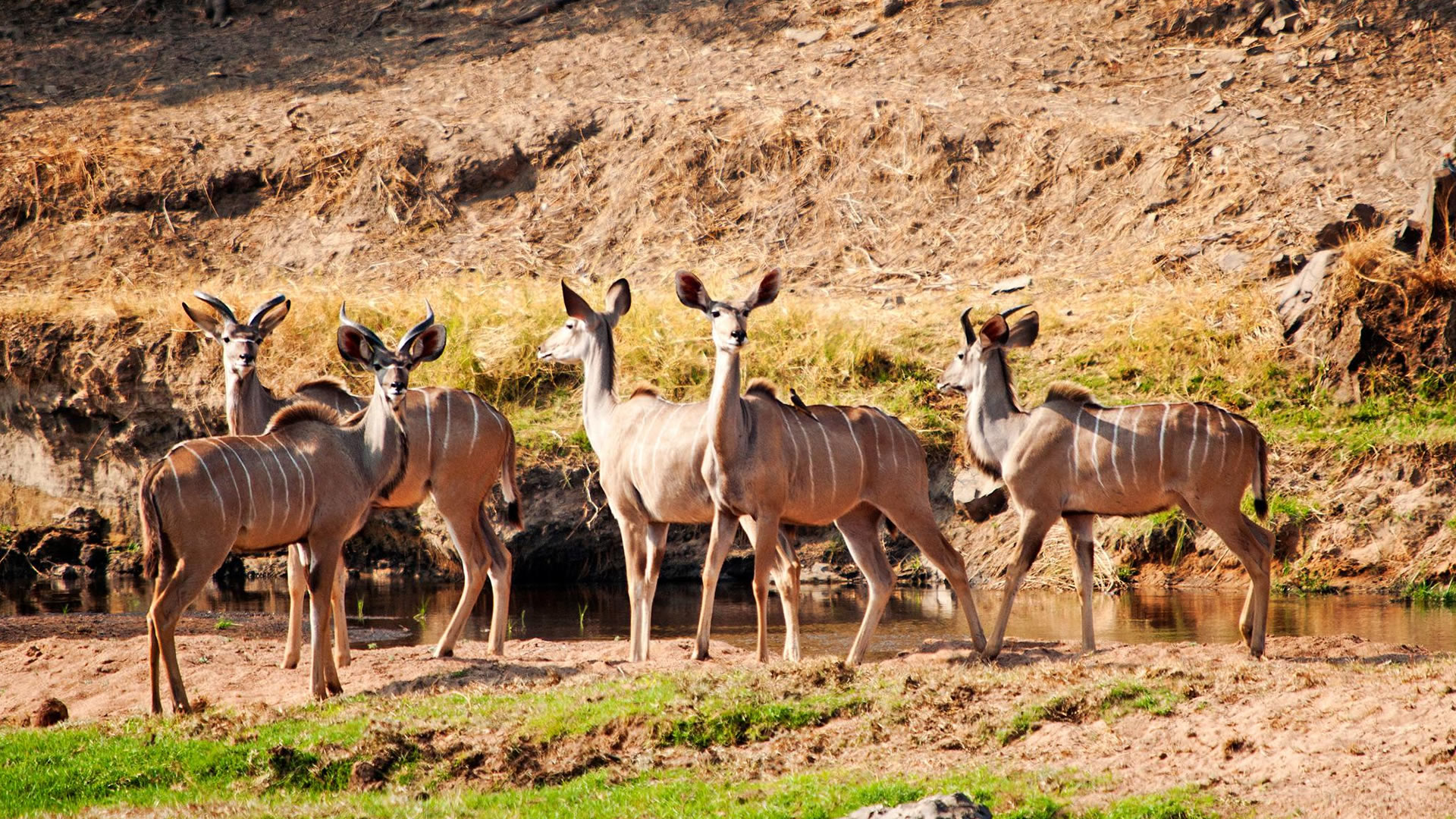Best time to visit: Serengeti National Park
Wildlife Experience
There is a plethora of wildlife in Serengeti, making it one of the top destinations for safaris, which include The Big 5 (elephant, “the world's largest land animal,” leopard, “the prince of darkness,” lion, “king of the savannah,” buffalo, “ not quite the lazy,” and rhino, “the pre-historic heavyweight). The Big Cats( lion “cheetah & leopard). Other animals include giraffes, zebra, wildebeests, crocodiles, hippos, impala, grant gazelle, spotted hyenas, black-backed jackals, African wild dogs, warthog, olive baboons, vervet monkeys, African python, black mamba, spitting cobra, puff adder, bat-eared fox, hyraxes, etc. Serengeti is home to the most significant concentration of predators globally, including over 1,000 African leopards, 3,000 lions, and approximately 8,000 spotted hyenas. At least 8,000 baby wildebeest are born every day in February Calving Season.
Birdlife
Serengeti hosts more than 500 species of birds, making it a perfect destination for avid birders. If you are a typical birder and have specific birds that you may wish to see, with its endless plains, the west corridor has diverse vegetation that favours a birdlife ecosystem with open savannah, whistling thorns, acacia trees, grassland, and a riverine forest along the Grumeti River. Serengeti is home to “Serengeti Specials,” which are endemic to the park and not found anywhere else. They include Schalow’s wheatear, Schalow’s turaco, rufous-tailed weaver, grey-crested helmet shrike and red-throated tit.
Kori bustard, black herons, martial eagle, Tanzania red-billed hornbill, Egyptian geese, Masai ostrich, crowned cranes, hamerkrops, secretary bird, black herons, marabou stork, lesser flamingo, etc. Unlike game viewing, which can be done at any time of the year, the best time for birding is during the rainy season. More prolonged rains are from March to May, and the shorter rains are from November. During this period, Serengeti received migratory birds from Europe and other parts of the world. The best place for birding safaris is the Seronera area, the central part of the park, which also hosts more nocturnal birds. Lake Ndutu is for vultures and secretary birds, and Lobo Hills is for birds of prey like eagles.
Best time to visit
Even though the perception of Africa is primarily hot, the Serengeti climate is relatively mild and pleasant. The minimum and maximum temperature varies with season. The wet season is the warmest. The temperatures around the Seronera area in Serengeti rarely rise above 37° C /99° F on a given hot day. At the same time, the wet season rarely falls below 13° C/55°F on a cold morning in the dry season.
Serengeti is an all-year-round park that one can visit anytime. Serengeti is extensive. Therefore, a minimum of 3-4 nights stay is recommended for an excellent wildlife view.
The dry months of June to October and December to April are the best times to visit Serengeti National Park. June to October: The dry months of the year are considered the best time to go on safari to Serengeti.
December to April is another peak season for tourists. Many tourists visit the southern side of Serengeti to see the calving of wildebeests and catch a glimpse of the adorable baby animals.
Wet season: November to December and March to May: The months are unpleasant for visiting the park due to “short rains” in November and “long rains” from March to May.
Getting There?
By Air: You can board a light aircraft for Serengeti Fly-In Safaris from Kilimanjaro International Airport(JRO) or Arusha Airport (ARK). It takes 1-5 hours to get to your nearest Serengeti airstrip. Upon arrival, you will be met by your lodge or camp representative and transferred to your final destination. The drive to your lodge or bush camp can take about 45 minutes to two hours; however, you won't get bored; there are many animals to see along the way, giving you a slight introduction to the adventure that awaits you. There are currently seven airstrips in Serengeti. If you stay in a more exclusive lodge, you might have access to direct private charter flights, so you don’t have to wait long.
By Road: Safari by road is the most popular means of travel, using an open roof 4x4 Safari Landcruiser. The drive from Arusha to Serengeti takes approximately 6-8 hours. But you can combine Serengeti Safari with other parks along the way. From Arusha to Seronera, or the Central part of the Serengeti, the drive is about 350km, approximately 5-6 hours. If you are heading to the western corridor near Grumeti River, the distance is 460 km, taking about 6-7 hours to drive from Arusha.


